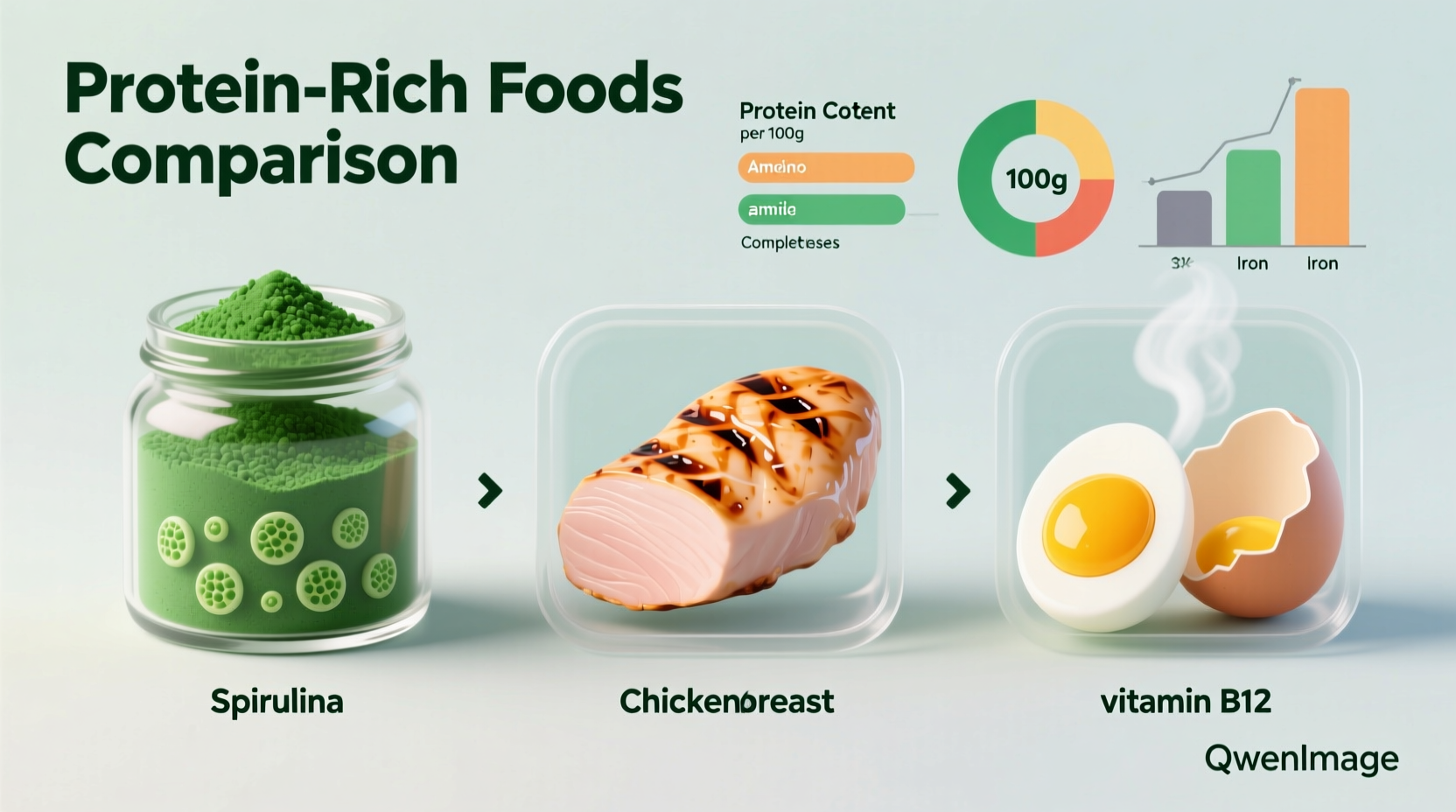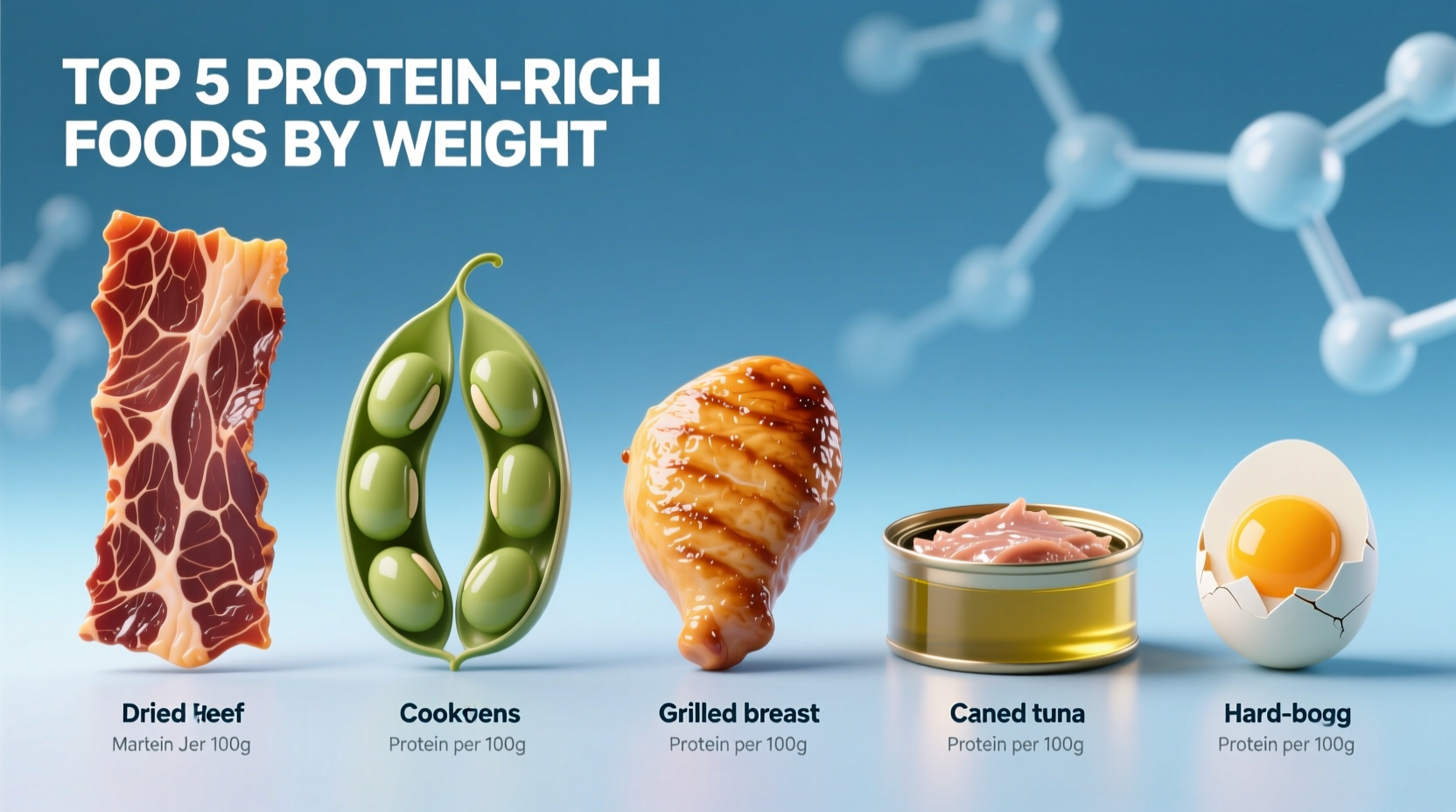Unlock Maximum Protein Intake: Science-Backed Food Rankings
Discover exactly which foods deliver the most protein per serving and how to optimize your diet for muscle growth, recovery, and overall health. This guide cuts through protein myths with laboratory-verified data from USDA and peer-reviewed nutrition research.
Understanding Protein Density: Beyond the Headlines
When evaluating "most protein rich food," we must consider three critical factors that many articles overlook:
- Measurement method - Protein percentage by weight vs. calories vs. per serving
- Hydration state - Dried foods appear more concentrated than their fresh counterparts
- Bioavailability - How much protein your body can actually utilize
For example, while dried spirulina contains 60% protein by weight, its practical absorption rate is lower than animal proteins. Meanwhile, cooked chicken breast delivers 31g of highly bioavailable protein per 100g serving - making it more effective for muscle building despite lower percentage concentration.
| Food Source | Protein (% by weight) | Protein (g per 100g) | PDV* |
|---|---|---|---|
| Dried spirulina | 55-70% | 57g | 114% |
| Whey protein isolate | 90-95% | 80g | 160% |
| Dried shrimp | 65-75% | 68g | 136% |
| Cooked chicken breast | 30-32% | 31g | 62% |
| Plain Greek yogurt | 10-11% | 10g | 20% |
*Percent Daily Value based on 50g protein requirement. Source: USDA FoodData Central, 2023
Protein Quality Matters More Than Pure Concentration
Not all protein is created equal. The Protein Digestibility Corrected Amino Acid Score (PDCAAS) measures how well your body utilizes protein. Animal sources generally score 1.0 (highest possible), while plant sources range from 0.4-0.7. This explains why 30g of chicken protein builds more muscle than 30g of soy protein.
Consider these practical limitations when choosing high-protein foods:
- Serving size reality - You won't eat 100g of dried spirulina (that's nearly a cup of powder)
- Preparation impact - Cooking methods affect final protein density
- Nutrient balance - Extremely high-protein foods often lack other essential nutrients
Top Practical Protein Sources for Daily Consumption
Based on bioavailability, serving size, and nutritional completeness, these foods deliver the most usable protein:
- Eggs - 6g protein per large egg with perfect amino acid profile (PDCAAS 1.0)
- Salmon - 22g protein per 3oz serving plus omega-3 fatty acids
- Lean beef - 26g protein per 3oz with iron and B12
- Cottage cheese - 25g protein per cup with slow-digesting casein
- Tempeh - 20g protein per cup with probiotics and fiber (best plant option)

Optimizing Your Protein Intake Strategy
Research from the American Journal of Clinical Nutrition shows your body can effectively utilize 20-40g of protein per meal for muscle synthesis. Rather than chasing the "most protein rich" single food, focus on these evidence-based strategies:
- Distribute protein evenly across 3-5 meals (20-40g per serving)
- Combine plant proteins (rice + beans) to create complete amino acid profiles
- Include protein within 45 minutes after exercise for optimal recovery
- Choose foods with high leucine content (eggs, whey, salmon) for muscle stimulation
A 2022 meta-analysis in Nutrients journal confirmed that whole food protein sources provide better long-term health outcomes than isolated protein supplements alone. The synergistic nutrients in whole foods enhance protein utilization and provide additional health benefits.
Special Considerations for Different Diets
Vegetarians and vegans need strategic planning to match animal protein quality. Research from the Journal of the International Society of Sports Nutrition shows combining complementary plant proteins throughout the day achieves similar muscle-building results to animal proteins when total daily intake reaches 1.6-2.2g per kg of body weight.
For older adults, the European Society for Clinical Nutrition recommends 1.0-1.2g protein per kg of body weight daily to prevent sarcopenia, with emphasis on leucine-rich foods to overcome age-related anabolic resistance.











 浙公网安备
33010002000092号
浙公网安备
33010002000092号 浙B2-20120091-4
浙B2-20120091-4